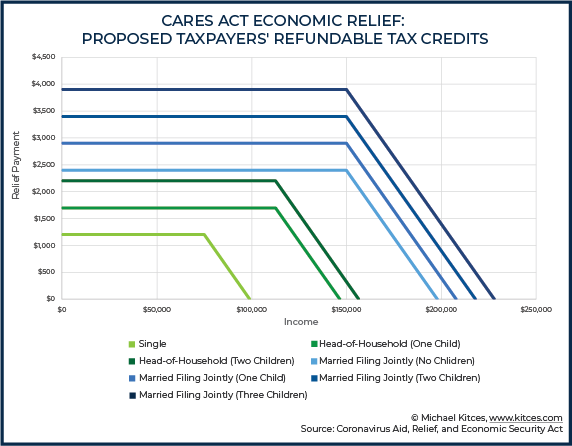End-of-the-Year Money Moves
Here are some things you might want to do before saying goodbye to 2018.
What has changed for you in 2018? Did you start a new job or leave a job behind? Did you retire? Did you start a family? If notable changes occurred in your personal or professional life, then you will want to review your finances before this year ends and 2019 begins.
Even if your 2018 has been relatively uneventful, the end of the year is still a good time to get cracking and see where you can plan to save some taxes and/or build a little more wealth.
Do you practice tax-loss harvesting? That is the art of taking capital losses (selling securities worth less than what you first paid for them) to offset your short-term capital gains. If you fall into one of the upper tax brackets, you might want to consider this move, which directly lowers your taxable income. It should be made with the guidance of a financial professional you trust. (1)
In fact, you could even take it a step further. Consider that up to $3,000 of capital losses in excess of capital gains can be deducted from ordinary income, and any remaining capital losses above that can be carried forward to offset capital gains in upcoming years. When you live in a high-tax state, this is one way to defer tax. (1)
Do you want to itemize deductions? You may just want to take the standard deduction for 2018, which has ballooned to $12,000 for single filers and $24,000 for joint filers because of the Tax Cuts & Jobs Act. If you do think it might be better for you to itemize, now would be a good time to get the receipts and assorted paperwork together. While many miscellaneous deductions have disappeared, some key deductions are still around: the state and local tax (SALT) deduction, now capped at $10,000; the mortgage interest deduction; the deduction for charitable contributions, which now has a higher limit of 60% of adjusted gross income; and the medical expense deduction. (2,3)
Could you ramp up 401(k) or 403(b) contributions? Contribution to these retirement plans lower your yearly gross income. If you lower your gross income enough, you might be able to qualify for other tax credits or breaks available to those under certain income limits. Note that contributions to Roth 401(k)s and Roth 403(b)s are made with after-tax rather than pre-tax dollars, so contributions to those accounts are not deductible and will not lower your taxable income for the year. They will, however, help to strengthen your retirement savings. (4)
Are you thinking of gifting? How about donating to a qualified charity or non-profit organization before 2018 ends? In most cases, these gifts are partly tax deductible. You must itemize deductions using Schedule A to claim a deduction for a charitable gift. (5)
If you donate publicly traded shares you have owned for at least a year, you can take a charitable deduction for their fair market value and forgo the capital gains tax hit that would result from their sale. If you pour some money into a 529 college savings plan on behalf of a child in 2018, you may be able to claim a full or partial state income tax deduction (depending on the state). (2,6)
Of course, you can also reduce the value of your taxable estate with a gift or two. The federal gift tax exclusion is $15,000 for 2018. So, as an individual, you can gift up to $15,000 to as many people as you wish this year. A married couple can gift up to $30,000 in 2018 to as many people as they desire. (7)
While we’re on the topic of estate planning, why not take a moment to review the beneficiary designations for your IRA, your life insurance policy, and workplace retirement plan? If you haven’t reviewed them for a decade or more (which is all too common), double-check to see that these assets will go where you want them to go, should you pass away. Lastly, look at your will to see that it remains valid and up-to-date.
Should you convert all or part of a traditional IRA into a Roth IRA? You will be withdrawing money from that traditional IRA someday, and those withdrawals will equal taxable income. Withdrawals from a Roth IRA you own are not taxed during your lifetime, assuming you follow the rules. Translation: tax savings tomorrow. Before you go Roth, you do need to make sure you have the money to pay taxes on the conversion amount. A Roth IRA conversion can no longer be recharacterized (reversed). (8)
Can you take advantage of the American Opportunity Tax Credit? The AOTC allows individuals whose modified adjusted gross income is $80,000 or less (and joint filers with MAGI of $160,000 or less) a chance to claim a credit of up to $2,500 for qualified college expenses. Phase-outs kick in above those MAGI levels. (9)
See that you have withheld the right amount. The Tax Cuts & Jobs Act lowered federal income tax rates and altered withholding tables. If you discover that you have withheld too little on your W-4 form so far in 2018, you may need to adjust your withholding before the year ends. The Government Accountability Office projects that 21% of taxpayers are withholding less than they should in 2018. Even an end-of-year adjustment has the potential to save you some tax. (10)
What can you do before ringing in the New Year? Talk with a financial or tax professional now rather than in February or March. Little year-end moves might help you improve your short-term and long-term financial situation.
 Justin D. Rucci, CFP®
Justin D. Rucci, CFP®
Wealth Advisor
Warren Street Wealth Advisors
Justin is an Investment Advisor Representative of Warren Street Wealth Advisors, a Registered Investment Advisor. The information contained herein does not involve the rendering of personalized investment advice but is limited to the dissemination of general information. A professional advisor should be consulted before implementing any of the strategies or options presented.
This material was prepared by MarketingPro, Inc., and does not necessarily represent the views of the presenting party, nor their affiliates. This information has been derived from sources believed to be accurate. Please note – investing involves risk, and past performance is no guarantee of future results. The publisher is not engaged in rendering legal, accounting or other professional services. If assistance is needed, the reader is advised to engage the services of a competent professional. This information should not be construed as investment, tax or legal advice and may not be relied on for avoiding any Federal tax penalty. This is neither a solicitation nor recommendation to purchase or sell any investment or insurance product or service, and should not be relied upon as such. All indices are unmanaged and are not illustrative of any particular investment.
Any investments discussed carry unique risks and should be carefully considered and reviewed by you and your financial professional. Past performance may not be indicative of future results. All investment strategies have the potential for profit or loss. Changes in investment strategies, contributions or withdrawals may materially alter the performance, strategy, and results of your portfolio. Historical performance results for investment indexes and/or categories, generally do not reflect the deduction of transaction and/or custodial charges or the deduction of an investment-management fee, the incurrence of which would have the effect of decreasing historical performance results. Economic factors, market conditions, and investment strategies will affect the performance of any portfolio and there are no assurances that it will match or outperform any particular benchmark. Nothing in this commentary is a solicitation to buy, or sell, any securities, or an attempt to furnish personal investment advice. We may hold securities referenced in the blog and due to the static nature of the content, those securities held may change over time and trades may be contrary to outdated posts.
Citations
1 – nerdwallet.com/blog/investing/just-how-valuable-is-daily-tax-loss-harvesting/ [4/16/18]
2 – marketwatch.com/story/how-to-game-the-new-standard-deduction-and-3-other-ways-to-cut-your-2018-tax-bill-2018-10-15 [10/15/18]
3 – hrblock.com/tax-center/irs/tax-reform/3-changes-itemized-deductions-tax-reform-bill/ [10/10/18]
4 – investopedia.com/articles/retirement/06/addroths.asp [2/2/18]
5 – investopedia.com/articles/personal-finance/041315/tips-charitable-contributions-limits-and-taxes.asp [10/1/18]
6 – savingforcollege.com/article/how-much-is-your-state-s-529-plan-tax-deduction-really-worth [9/27/18]
7 – fool.com/retirement/2018/06/28/5-things-you-might-not-know-about-the-estate-tax.aspx [6/28/18]
8 – marketwatch.com/story/how-the-new-tax-law-creates-a-perfect-storm-for-roth-ira-conversions-2018-03-26 [9/15/18]
9 – fool.com/investing/2018/03/17/your-2018-guide-to-college-tuition-tax-breaks.aspx [3/17/18]
10 – money.usnews.com/money/personal-finance/taxes/articles/2018-10-16/should-you-adjust-your-income-tax-withholding [10/16/18]





